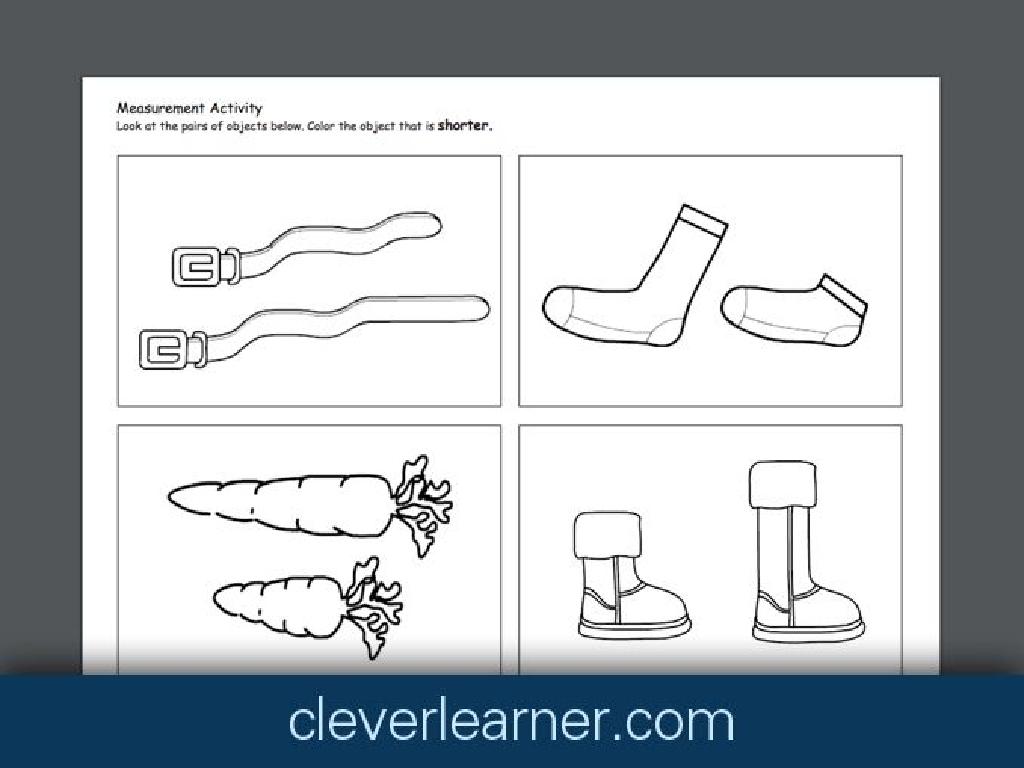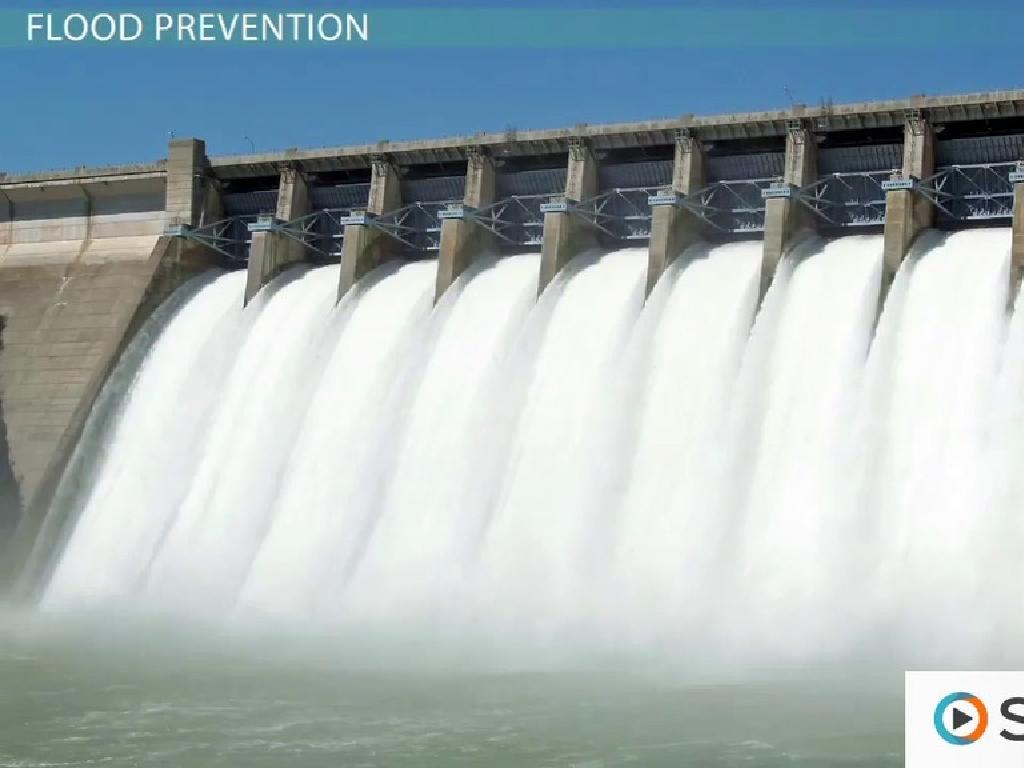How Do Air Masses Form?
Subject: Science
Grade: Sixth grade
Topic: Weather And Climate
Please LOG IN to download the presentation. Access is available to registered users only.
View More Content
How Do Air Masses Form?
– Air masses and the atmosphere
– Large bodies of air with uniform temperature and humidity
– Weather vs. Climate
– Weather is day-to-day, climate is long-term patterns
– Formation of air masses
– Created by temperature differences due to unequal heating of Earth’s surface
– Characteristics of air masses
– Classified by their source region’s temperature and moisture
|
This slide introduces the concept of air masses and their role in weather and climate. Begin by explaining that an air mass is a large body of air with similar temperature and humidity throughout. Highlight the difference between weather and climate, with weather being the short-term state of the atmosphere and climate being the average weather over a long period. Discuss how air masses form over large areas where the air takes on the characteristics of the surface below, leading to temperature differences. These differences are due to the unequal heating of the Earth’s surface by the sun. Conclude by describing how air masses are classified by the temperature and humidity of their source regions, which can be over land (continental) or water (maritime).
Understanding Weather and Climate
– Weather vs. Climate: Defining terms
– Weather is day-to-day state; climate is long-term patterns.
– Key Components of Weather
– Temperature, humidity, precipitation, and wind are elements of weather.
– Weather’s Impact on Daily Life
– Weather influences clothing choices, activities, and mood.
– How Air Masses Form
– Air masses form from large bodies of air with uniform temperature and humidity.
|
This slide introduces students to the fundamental concepts of weather and climate, highlighting the differences between the two. Weather refers to the short-term conditions of the atmosphere at a specific time and place, while climate describes the average weather conditions over a longer period. Students should understand the four main components of weather: temperature, humidity, precipitation, and wind, as these elements determine the day-to-day weather conditions. Discuss how weather can affect various aspects of our lives, including what we wear and the activities we plan. Conclude by explaining that air masses form when a large body of air develops a uniform temperature and humidity, often influenced by the surface over which it rests. This understanding is crucial for the next topic on how these air masses contribute to weather patterns.
Exploring Air Masses
– What is an Air Mass?
– A large body of air with uniform temperature and humidity
– Characteristics of Air Masses
– They can be vast and cover millions of square miles
– Types of Air Masses
– Classified by temperature (polar or tropical) and humidity (continental or maritime)
– Temperature & Humidity’s role
– Warm or cold, dry or moist, air masses form based on their source region’s characteristics
|
Begin the lesson by defining an air mass and discussing its significance in weather and climate. Explain that an air mass is a large body of air with consistent temperature and humidity throughout. Highlight the characteristics such as size, uniformity, and the ability to travel over large areas. Introduce the types of air masses, focusing on how temperature and humidity define them: polar vs. tropical (temperature) and continental vs. maritime (humidity). Use examples to illustrate how air masses acquire their characteristics from the regions they form over, such as polar regions or oceans. This will set the stage for understanding how air masses interact to create various weather patterns.
Formation of Air Masses
– Air masses form over large areas
– Large bodies of air take on the characteristics of the surface below, like oceans or land.
– Earth’s surface influences air masses
– The temperature and moisture of the surface affect the air’s temperature and humidity.
– Example: Polar air mass creation
– Polar air masses form over cold regions, gaining low temperatures and little moisture.
|
Air masses are large bodies of air that have uniform temperature, humidity, and pressure. They form over large areas where the air takes on the characteristics of the surface below, such as large bodies of water or extensive land areas. The Earth’s surface plays a crucial role in this process; for example, the temperature and moisture of the surface will influence the air directly above it. A polar air mass is a type of air mass that forms over cold regions, typically around the poles, and is characterized by being cold and dry. Understanding the formation of air masses is essential for predicting weather patterns and climate. In class, we can discuss how different surfaces might affect the air mass above them and look at specific examples like polar or tropical air masses.
Air Masses and Weather Patterns
– Influence of air masses on weather
– Air masses affect temperature, humidity, and pressure.
– Fronts: Meeting of different air masses
– Fronts are boundaries that cause weather changes like rain or snow.
– Predicting weather with air mass data
– Meteorologists use air mass characteristics to forecast weather.
|
This slide introduces students to the concept of air masses and their significant role in determining weather patterns. Air masses are large bodies of air with uniform temperature and humidity that move and bring changes in weather. When two different air masses meet, they form fronts, leading to various weather phenomena such as storms, clear skies, or temperature changes. Understanding the properties of air masses helps meteorologists predict weather conditions by analyzing their movement and interaction. Encourage students to think about how the weather changes they experience are related to these concepts. Discuss how air masses can be used to predict the weather, emphasizing the importance of this skill in planning and preparedness for various weather conditions.
Class Activity: Creating a Weather Map
– Identify and label air masses
– Use symbols for different fronts
– Cold fronts with blue triangles, warm fronts with red semicircles
– Predict regional weather
– Consider air mass properties like temperature and humidity
– Discuss predictions with class
|
This activity is designed to help students apply their knowledge of air masses and weather fronts by creating their own weather maps. Provide students with a blank map and a legend of symbols to represent cold fronts, warm fronts, stationary fronts, and occluded fronts. Instruct them to identify and label the different air masses, such as maritime tropical or continental polar, and use the appropriate symbols to indicate the types of fronts where air masses meet. Encourage them to predict the weather for various regions based on the location and movement of air masses and fronts. After completing their maps, students should discuss their predictions in small groups or with the class to foster collaborative learning and critical thinking. Possible variations of the activity could include using real-time weather data, comparing predictions to actual weather events, or role-playing as meteorologists presenting a weather forecast.
Conclusion: Air Masses and Weather
– Recap of air mass formation
– Air masses form when air sits over an area, taking on its temperature and humidity.
– Air masses in weather prediction
– Understanding air masses helps us predict weather patterns and changes.
– Review of class activity
– We mapped how air masses move and affect weather.
– Discuss our findings
– Sharing what we’ve learned about air mass influences.
|
As we wrap up today’s lesson, let’s revisit the key concept of how air masses form by resting over regions and acquiring their characteristics. This understanding is crucial for predicting weather, as different air masses interact to create various weather conditions. Reflect on the class activity where students mapped the movement of air masses and observed their impact on local weather. Encourage students to discuss their findings and how this knowledge can be applied in real-life scenarios, such as preparing for weather events. This discussion will reinforce the concepts learned and help students appreciate the role of air masses in daily weather forecasts.
Homework: Exploring Air Masses
– Research a specific air mass
– Describe its impact on weather
– How does this air mass change temperature, precipitation, or wind patterns?
– Write about its effects on a region
– Choose a region affected by your air mass and explore the local climate changes
– Share your findings in class
|
This homework assignment is designed to deepen students’ understanding of air masses and their influence on weather patterns. Students should select one air mass, such as maritime tropical or continental polar, and investigate how it forms and moves. They should then describe how this air mass affects weather conditions, such as temperature, humidity, and precipitation, in a specific region. Encourage students to use reliable sources for their research and to think critically about the connection between air masses and regional weather events. In the next class, students will have the opportunity to present their findings, allowing them to share knowledge and learn from each other’s research.






